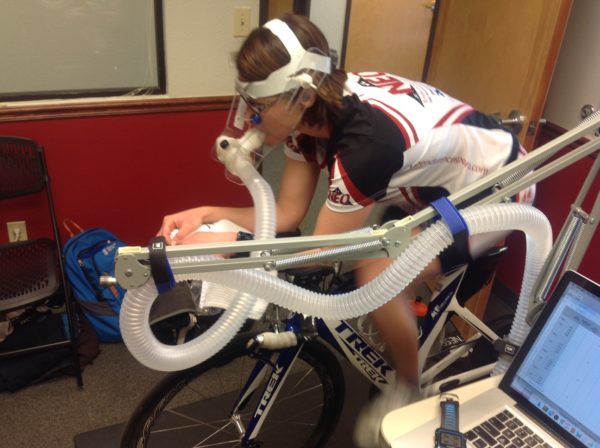 In previous weeks we talked about Zones 1 and 2, which are the “easy” zones. Now we’re going to get into the zones where it will feel like you are doing work.
In previous weeks we talked about Zones 1 and 2, which are the “easy” zones. Now we’re going to get into the zones where it will feel like you are doing work.
Zone 3 is often called “Tempo,” and runs about 90-95% of your Lactate Threshold Heart Rate. Tempo means “the rate or speed of motion or activity; pace.” I still need to look up how this zone got this name, but to take a guess, it’s the first zone where you feel like you are putting in some speed.
| LTHR | 140 | 150 | 160 | 170 |
| 90% | 126 | 135 | 144 | 153 |
| 95% | 133 | 142 | 152 | 162 |
It’s hard enough you feel like you are doing work, but it’s slow enough you can spend a lot of time here. This zone can also be called “no man’s land,” as spending a lot of time here just gets you good at this pace.
You actually do get a lot of fitness benefits from time in this zone, so let’s look at what it can do for you.
- Increase plasma volume
- Increase stroke volume/cardiac output
- Increase mitochondrial density
- Improve lactate threshold
- Improve muscle glycogen storage
- Hypertrophy of slow-twitch muscle fibers
- Convert Type IIx muscle fibers to type IIa
- Increase the number of capillaries in your muscles
We get good physiological adaptations by training here. It is below your lactate threshold, but close enough that you are producing reasonable amounts of lactate and clearing it.
Here’s a really great article on what’s referred to as “sweet spot” training. Note: it refers to percentage of lactate threshold Power for cyclists. But the idea of spending quality time at a high enough intensity to get good adaptations, but not too high that it burns us out is the same. (There is even a comprehensive table on physiological adaptations taken from Allen and Coggan’s “Training and Racing With A Power Meter”..one of the must-have references for those with a power meter.)
Tempo intervals are typically longer intervals, often starting around 10 minutes and then building up to longer times, even an hour or more, depending on your training and race goals (and cycling vs. running.)
Now on to the “fun” zone!
Zone 4 is our Threshold Zone, often 95%-105% of your threshold heart rate.
This is where training intervals can get hard. You do long enough intervals just below your threshold to really get your body used to working hard. Remember, lactate threshold is the pace we can maintain for about an hour (depending on fitness level).
| LTHR | 140 | 150 | 160 | 170 |
| 95% | 133 | 142 | 152 | 162 |
| 105% | 147 | 158 | 168 | 177 |
Physiological adaptations are similar as mentioned above for Zone 3, just even more so, especially the ability to clear lactate. Intervals in Zone 4 can really improve your lactate threshold and help you either go faster or closer to your threshold for longer.
You need to be careful here – these intervals are harder on your body. You can’t do too many or you’ll just get tired and won’t have quality workouts! Zone 4 and Zone 5 (we will talk about next week) are hard workouts! Remember when I mentioned Zone 1 and Zone 2? These are the easy zones you do on other days. As the saying goes, keep easy days easy so hard days can be hard!
Once you’ve established a solid base, you can start adding threshold intervals. But I’d like to point out that here is where going by power or pace instead of heart rate may be more useful.
This is because heart rate is a lagging indicator, meaning it will take a while to get to your HR zone after your effort starts so exact effort can be difficult to gauge at the beginning. Heart rate is also affected by environmental conditions (temperature, hydration, fatigue).
Pace (running) of course is affected by wind and grade, but often these intervals are good to do on a track or treadmill to help reduce those factors.
For example, if you are doing a zone 4 running interval set at 6 minutes each, it may take 3 minutes for your heart rate to get into zone 4 for the first interval.
So how fast do you run? If you go out too hard to get it there, you may overshoot and then have to slow down. Not an ideal training situation. If you know your threshold pace, you can get right there.
You might start your threshold intervals at a 1:1 or 2:1 work to rest ratio. If you haven’t done threshold work before, start around 5-8 minute intervals (shorter on the run than on the bike). Over time you lengthen the intervals and/or shorten the recovery. The more fit you are, the less recovery you will need.
If you are using heart rate and find you are slowing down considerably while keeping your heart rate in the zone, it’s time to stop. That’s another reason using power and/or pace can be helpful…if you can’t maintain power/pace, it’s time to end the intervals for the day and get back into zones 2 and 1.
Your current fitness and race goals will determine how to set up Zone 3 and Zone 4 training sessions. And knowing your training zones is now very useful.
Next week we will talk about Zone 5 – VO2 Max!








